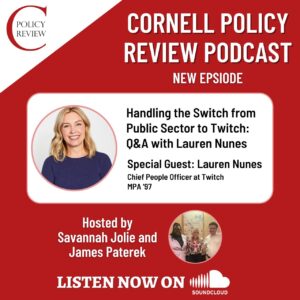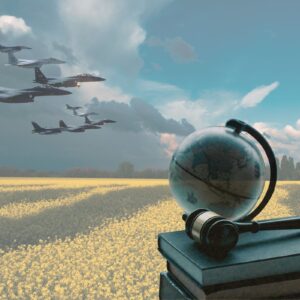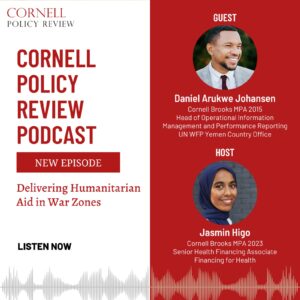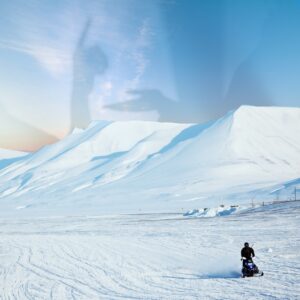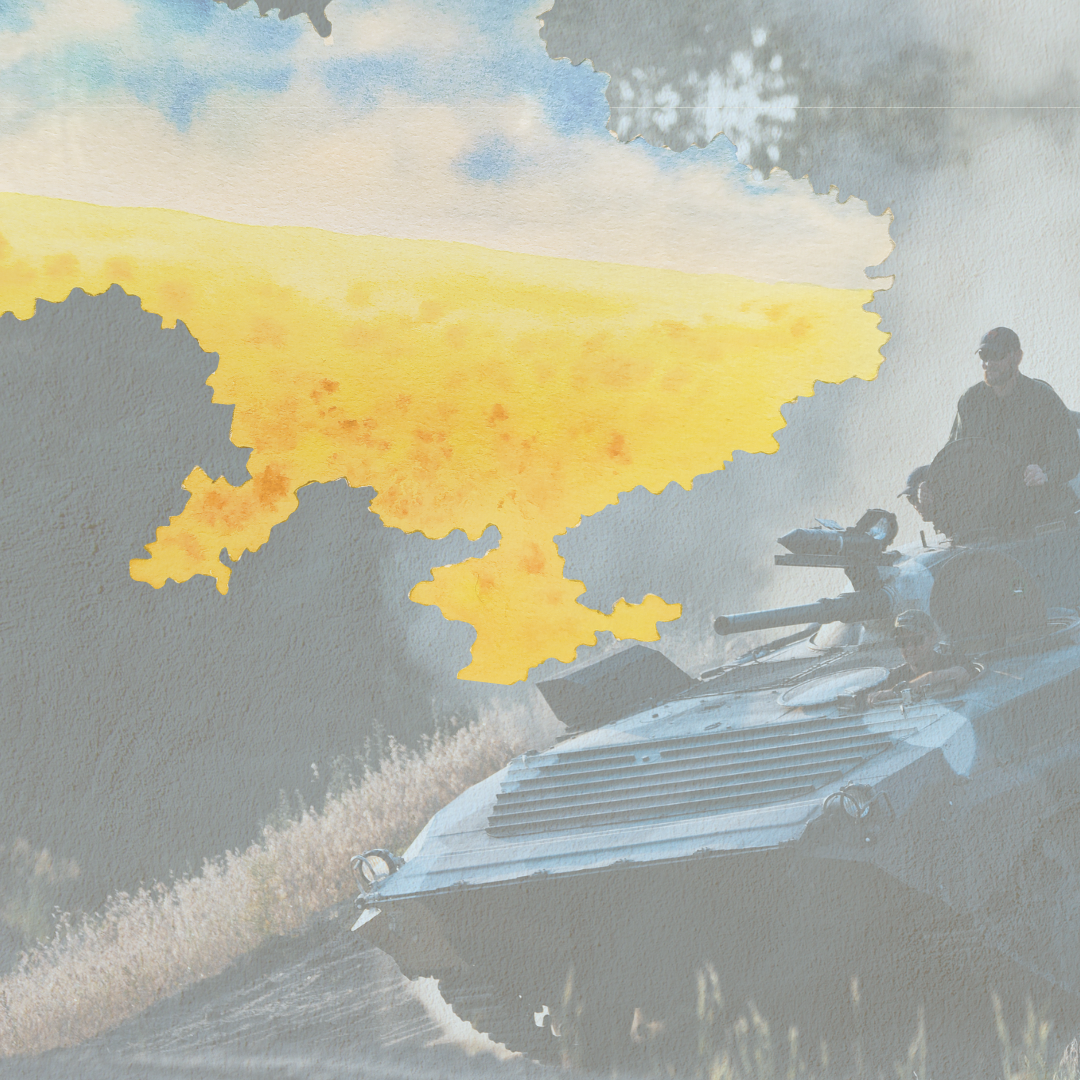
Graphic by Norie Wright
By Sergiy Sydorenko
Edited by Grant Ewing and Courtney Schneider
Introduction
The Russo-Ukrainian War has prompted many diverse discussions among western analysts. Much attention has been given to the global economic fallout caused by the war, as well as western military assistance to Ukraine. However, few are paying attention to what takes place behind no man’s land, in the territories currently occupied by Russian forces covering most or all of the following Ukrainian oblasts: Kherson, Zaporizhzhia, Donetsk, Luhansk, and the Autonomous Republic of Crimea (Figure 1). Since Russia’s 2022 invasion, Moscow has steadily implemented Russification, the policy of assimilating non-Russians into Russian culture.¹ Anti-Ukrainian human rights abuses and millions of forced out-migrants are re-molding Ukraine’s socio-cultural landscape. Should Ukraine liberate its occupied territory, Kyiv will face the challenge of undoing Moscow’s administrative and societal Russification.
Figure 1 – Ukrainian oblasts under partial or full Russian occupation³⁴ (Crimea was annexed in 2014, while Kherson, Zaporizhzhia, Donetsk, and Luhansk were annexed in September 2022)
History of Russification in Ukraine
While most of modern-day Ukraine has been intermittently under Russian control since the mid-seventeenth century, Russification intensified in the 1840s¹ when Moscow became concerned about growing Ukrainian identity. Notable examples of tsarist Russification are the Valuev Circular and the Ems Decree²–laws forbidding the publication of Ukrainian books, performing Ukrainian theater, or lecturing in Ukrainian. Following the communist revolution in 1917, there was a brief reversal of this approach. In the 1920s, the Soviets implemented korenizatsiia (“indigenization”), which promoted the use of native Ukrainian languages and the practice of ethnic customs.¹ The policy aimed to make the new communist system more attractive to non-Russians, and Ukrainians – being the largest minority – were quick to benefit from it both politically and culturally.¹
By the 1930s, however, Stalin, fearing a rise of nationalism, reversed the indigenization policy and began purging anyone associated with it.¹ As a result, tens of thousands of Ukrainian politicians, artists, and intelligentsia – politically-influential intellectuals – were imprisoned and killed.¹ Simultaneously, five to seven million people died³ in rural Ukraine in the Holodomor – a famine caused by Stalin’s collectivization policies¹ that aimed to jumpstart the USSR’s industrialization. The Soviets also forced mass migrations:⁴ hundreds of thousands of Ukrainians were deported to Siberia and Central Asia, and the barren countryside was then repopulated with ethnic Russians. Stalin’s draconian purges continued until he died in 1953, after which the persecution of minorities declined.¹ However, Russification continued quietly through the promotion and increased use of the Russian language until the collapse of the Soviet Union in the 1990s.⁵
Legacy of Russification and Contemporary Ukraine
Modern-day Ukraine reflects the complex history of Russification. About one-third of the population speaks Russian and is predominantly located in Ukraine’s aforementioned southeastern oblasts: Kherson, Zaporizhzhia, Donetsk, Luhansk, and the Autonomous Republic of Crimea (Figure 2). Similarly, the country’s ethnic Russians – about 17 percent of the population⁶ – reside in these same southeastern oblasts.⁷ The long period of Russification has also led to political rifts and contributed to the region’s voting habits. Since Ukrainian independence, Moscow has relied on its vast media to help sway its Russian-leaning population in Ukraine; while the media had little effect on pro-Western Ukrainians, it helped secure pro-Russian votes of ethnic Russians and undecided voters.⁸ For instance, ethnic Russians, or those predominantly using the Russian language, were less likely to vote for pro-Western policies.⁹ Furthermore, unlike other areas of Ukraine, Russian-speaking areas are mostly concerned with the status of the Russian language¹⁰ and gaining regional autonomy.
Figure 2 – Language map of Ukraine³² (lighter areas represent smaller numbers of Ukrainian speakers)
Russia’s 2022 Invasion and Renewal of Russification
As of 2023, large parts of Ukrainian territory are under Russian occupation and facing a new wave of Russification. Although Moscow annexed the Luhansk, Donetsk, Zaporizhzhia and Kherson oblasts in September 2022, they were subjected to Russification far earlier in the war. From the first days of occupation, the Kremlin sent its media outlets to occupied territories to promote Russian troops as saviors, justifying their war in Ukraine as liberation from Nazis.¹¹ The occupiers also raised billboards depicting famous Russian military figures, spreading pro-Russian sentiment, and promoting the narrative of Russo-Ukrainian fraternity.¹²
In May 2022, Russia began targeting the occupied regions’ administrative and educational ties to Kyiv: The Kremlin introduced the ruble as the new currency in Kherson, and Russian banks were scheduled to open in the city in 2023.¹³ Ukrainian books and educational materials were destroyed, and teachers throughout the occupied territories were forced to cooperate under threat of violence and death.¹⁴ In September 2022, the Kremlin introduced a new, pro-Russian curriculum that marginalizes Ukrainian identity and undermines Ukraine’s statehood.¹⁵ Further, many local teachers have fled or have been detained, and Moscow has been incentivizing Russian teachers to move to occupied Ukrainian territories.¹⁶
There is also a spiritual aspect to the occupation, namely the Russian Orthodox Church (ROC). Over the past decade, the ROC has become intertwined with the Russian government, and like the Kremlin, it has a large stake in Ukraine:¹⁷ The country has over 12,000 ROC parishes,¹⁸ which translates into vast soft power and considerable income for the ROC. After Moscow’s invasion, the ROC ordered a consolidation of all parishes in occupied areas.¹⁹ Churches in Crimea were also transferred to the direct control of the Moscow Patriarchate.²⁰
The Russification of occupied Ukraine is only half the story: The Kremlin’s Russification policy has been enhanced by population displacement resulting from the invasion. When the war started in 2014, over half a million Ukrainians were internally displaced in Ukraine and hundreds of thousands left the country.²¹ An even greater exodus occurred following Russia’s 2022 invasion: As of January 2023, there are eight million Ukrainian refugees²² and nearly six million internally displaced persons.²³ While the majority of these refugees are in western and central European countries, 2.85 million are in Russia.²⁴ It is difficult to say how many fled to Russia voluntarily, and how many were deported through filtration camps²⁵ where physical abuse, detention, and torture are frequently reported.²⁶ Russian filtration camp authorities also reportedly confiscate Ukrainian citizenship documents, replacing them with Russian passports.²⁷
In July 2022, the U.S. State Department reported that 260,000 Ukrainian children were “forcibly deported”²⁷ to Russia. Since the invasion, there have been numerous additional cases of forced family separation, in which Ukrainian children have been taken from their parents and placed for adoption in Russia.²⁸ Ukrainians that stayed in occupied regions, however, have not fared much better. At the onset of the invasion, tens of thousands of civilians were forcibly mobilized in the separatist-controlled Donetsk and Luhansk People’s Republics.²⁹ The process was repeated during Russia’s partial mobilization in September 2022,²⁹ this time forcing mobilization across all occupied Ukrainian territories. The result has been a double-edged sword:³⁰ those opposed to Russia’s invasion have fled, been deported, or have gone into hiding to avoid persecution, and the few remaining civilians support Russia’s war. This mirrors the outcomes following Russia’s 2014 invasion of Crimea and the Donbas, but on a larger scale. As a result, the Kremlin has already won one victory: entrenching staunch Russian supporters in occupied territories, people who despise all things Ukraine.
Conclusion
As of February 2023, Russia occupies roughly 17 percent of Ukrainian territory³¹ (Figure 3). The Kremlin’s occupation has begun a renewed Russification of the region. These policies – aimed at assimilating Ukrainians in occupied lands and migrating Russians into areas previously inhabited by Ukrainians – have been enhanced by the migration crisis caused by the war. While the outcome of the war is not certain, one thing is: the behind-the-scenes Russification is undermining Ukrainian identity and statehood day by day. Should Ukraine liberate its lost territory, it will not only have to deal with war-torn cities, but also with the economic, administrative, and socio-cultural impacts of Russia’s occupation.
Figure 3 – Russian Invasion of Ukraine³⁹ (as of February 26, 2023)
Endnotes
- Theodore R Weeks, “Russification / Sovietization” European History Online (3 December 2010): http://ieg-ego.eu/en/threads/models-and-stereotypes/Russification-sovietization
- Andrii Danylenko, review of Brothers or Enemies: The Ukrainian National Movement and Russia from the 1840s to the 1870s, by Johannes Remy, University of Toronto Press, The Slavonic and East European Review, Vol.95, No.3, July 2017, https://doi.org/10.5699/slaveasteurorev2.95.3.0568
- Frank Sysyn, “Thirty Years of Research on the Holodomor: A Balance Sheet”, East / West: Journal of Ukrainian Studies, Vol.2, No.1, 23 January 2015, https://doi.org/10.21226/T26P4M
- Oleh Wolowyna, Serhii Plokhy, Nataliia Levchuk, Omelian Rudnytskyi, Alla Kovbasiuk, and Pavlo Shevchuk, “Regional variations of 1932–34 famine losses in Ukraine”, Canadian Studies in Population, Vol. 43, No.3-4 (2016): 175-202. https://shevchenko.org/research-publications/publications/regional-variations-of-1932-34-famine-losses-in-ukraine/
- Maria Sukhova, “Russification of Soft Power: Reconceptualization of soft power in contemporary Russia” (master’s thesis, Linköping University, 2015). https://www.diva-portal.org/smash/record.jsf?pid=diva2%3A823106&dswid=5909
- State Statistics Committee of Ukraine, “National Composition of Population”, All Ukrainian Population Census 2001. http://2001.ukrcensus.gov.ua/eng/results/general/nationality/
- Valery Dzutsati, “Geographies of hybrid war: rebellion and foreign intervention in Ukraine”, Small Wars & Insurgencies, Vol.32, No.3, (10 December 2020): 441-468. https://doi.org/10.1080/09592318.2020.1849897
- Peisakhin, Leonid, and Arturas Rozenas. “Electoral Effects of Biased Media: Russian Television in Ukraine”. American Journal of Political Science, Vol. 62, No. 3, (July 2018): pp. 535–550. https://onlinelibrary.wiley.com/doi/pdf/10.1111/ajps.12355
- Constant, Amelie F., Martin Kahanec, and Klaus F. Zimmerman. “The Russian-Ukrainian Political Divide”. Eastern European Economics, Vol.49, No.6, (November–December 2011): 97–109. http://www.klausfzimmermann.de/wp-content/uploads/2022/02/2011-111_TheRussianUkrainianPoliticalDivide.pdf
- Agnieszka Pikulicka-Wilczewska Richard Sakwa (editors), Ukraine and Russia: People, Politics, Propaganda and Perspectives, E-International Relations (March 2015): https://www.e-ir.info/publication/ukraine-and-russia-people-politics-propaganda-and-perspectives/
- Jack Goodman, Maria Korenyuk, Lucy Swinnen and Andrey Zakharov, “War in Ukraine: The making of a new Russian propaganda machine”, BBC News, 29 May 2022: https://www.bbc.com/news/world-europe-61441192
- Bernat Armangue, “AP PHOTOS: Propaganda billboards embodied Russian occupation”, AP News, 2 December 2022: https://apnews.com/article/russia-ukraine-europe-9f671d979709c0ea2a63bddda0044364/
- Adam Taylor and Sammy Westfall, “Shift to ruble in Kherson could signal consolidation of Russian control in occupied region”, The Washington Post, 1 May 2022: https://www.washingtonpost.com/world/2022/05/01/kherson-russia-ruble-internet-referendum/
- Zhanna Bezpiatchuk & Sofia Bettiza, “Ukraine war: Tortured for refusing to teach in Russian”, BBC News, 1 October 2022: https://www.bbc.com/news/world-europe-63037713
- Kevin Liffey and Jonathan Oatis, “Putin pushes Kremlin-approved history as priority for Russian schools”, Reuters, 1 September 2022: https://www.reuters.com/world/europe/putin-pushes-kremlin-approved-history-priority-russian-schools-2022-09-01/
- Julia Mueller, “Russia sending hundreds of teachers to Ukraine to offer ‘corrected’ education: report”, The Hill, 18 July 2022: https://thehill.com/policy/international/3563982-russia-sending-hundreds-of-teachers-to-ukraine-to-offer-corrected-education-report/
- Brandon A. Davis, “Holy War: How Putin Weaponized The Russian Orthodox Church” (thesis, Naval Postgraduate School, 2019): http://hdl.handle.net/10945/63444
- Antony Pakanych (Metropolitan Antony), “Report of the Chancellor of the Ukrainian Orthodox Church for 2022”, Ukrainian Orthodox Church, 24 December 2022: https://news.church.ua/2022/12/24/zvit-keruyuchogo-spravami-ukrajinskoji-pravoslavnoji-cerkvi-za-2022-rik/
- “ROC’s special commission to deal with parishes in the annexed territories”, Ukrainian Orthodox Church News, 1 October 2022: https://spzh.news/en/news/90940-sudyboj-prihodov-na-anneksirovannyh-territorijah-zajmetsya-speckomissija-rpc
- “ROC Synod: Crimean eparchies of UOC received directly into Russian Church”, Ukrainian Orthodox Church, 7 June 2022: https://spzh.news/en/news/88888-sinod-rpc-perevel-krymskije-jeparkhii-upc-v-podchinenije-patriarkhu
- Divers, “Ukraine conflict uproots hundreds of thousands”, United Nations High Commissioner for Refugees, 5 December 2014: https://www.unhcr.org/en-us/news/latest/2014/12/548190aa9/ukraine-conflict-uproots-hundreds-thousands.html
- Operational Data Portal, “Ukraine Refugee Situation”, United Nations High Commissioner for Refugees, 31 January 2023: https://data.unhcr.org/en/situations/ukraine
- Displacement Tracking Matrix (DTM), “Ukraine”, International Organization of Migration, January 2023: https://dtm.iom.int/ukraine
- Omer Karasapan, “Ukrainian refugees: Challenges in a welcoming Europe”, The Brookings Institution, 14 October 2022: https://www.brookings.edu/blog/future-development/2022/10/14/ukrainian-refugees-challenges-in-a-welcoming-europe/#:~:text=listed%207.6%20million%20Ukrainian%20refugees,evidence%20of%20executions%20and%20torture.
- “Ukraine: Russia’s unlawful transfer of civilians a war crime and likely a crime against humanity – new report”, Amnesty International, 10 November 2022: https://www.amnesty.org/en/latest/news/2022/11/ukraine-russias-unlawful-transfer-of-civilians-a-war-crime-and-likely-a-crime-against-humanity-new-report/
- Meetings Coverage and Press Releases, “Reports of Russian Federation Forces Putting Ukrainian Civilians in ‘Filtration’ Camps Must Be Investigated, Senior Officials Tell Security Council”, United Nations Security Council, 9126th Meeting, 7 September 2022: https://press.un.org/en/2022/sc15023.doc.htm
- Anthony J. Blinken, “Russia’s “Filtration” Operations, Forced Disappearances, and Mass Deportations of Ukrainian Citizens ”, press statement, U.S. Department of State, 13 July 2022: https://www.state.gov/russias-filtration-operations-forced-disappearances-and-mass-deportations-of-ukrainian-citizens/#:~:text=Estimates%20from%20a%20variety%20of,regions%20in%20the%20Far%20East
- Stanislav Krasilnikov, “Life here is going in a crappy direction. Tens of thousands of residents have been taken to war with Ukraine in the LNR and DNR. Without them, businesses in the home front do not work, and the security services persecute even the wives of conscripts”, Meduza, 6 July 2022: https://meduza.io/feature/2022/07/06/zhizn-zdes-katitsya-v-hrenovuyu-storonu
- Marc Santora, “Russia Begins to Mobilize Ukrainians to Fight Against Their Own Country”, The New York Times, 25 September 2022: https://www.nytimes.com/2022/09/25/world/europe/russia-ukraine-forces-referendum.html
- Mansur Mirovalev, “What’s behind pro-Russian attitudes in eastern Ukraine?”, AlJAzeera, 21 April 2022: https://www.aljazeera.com/news/2022/4/21/whats-behind-pro-russian-attitudes-in-eastern-ukraine
- Pierre Breteau, “War in Ukraine: Russia now controls only 16% of Ukrainian territory”, Le Monde, 6 January 2023: https://www.lemonde.fr/en/les-decodeurs/article/2023/01/06/war-in-ukraine-russia-now-controls-only-16-of-ukrainian-territory_6010578_8.html
- “Language map of Ukraine”, Translators without Borders (n.d.): https://translatorswithoutborders.org/languages-of-ukraine-interactive-en
- Barros, George, Kateryna Stepanenko, Thomas Bergeron, Noel Mikkelsen, and Daniel Mealie. “Interactive Map: Russia’s Invasion of Ukraine”. Institute for the Study of War, 27 February 2023: https://storymaps.arcgis.com/stories/36a7f6a6f5a9448496de641cf64bd375
- AlJazeera, “Mapping the occupied Ukraine regions Russia is formally annexing”, AlJazeera, 21 September 2022: https://www.aljazeera.com/news/2022/9/21/mapping-the-ukraine-regions-voting-on-joining-russia


